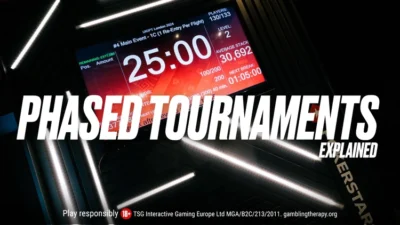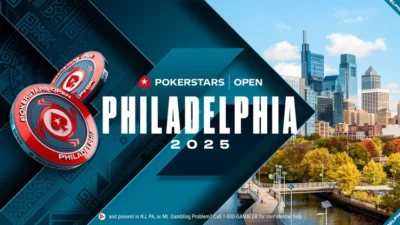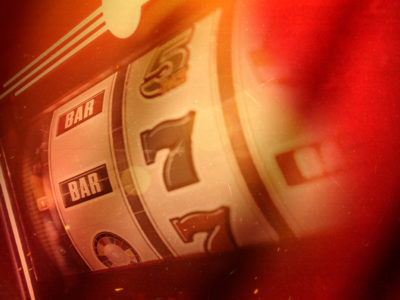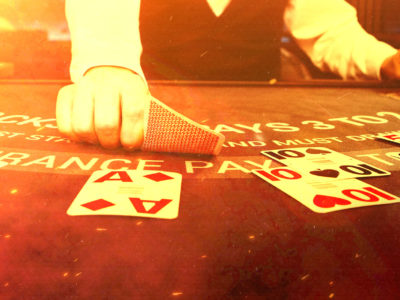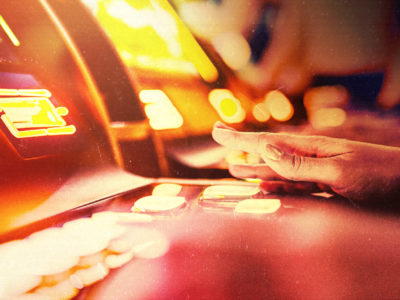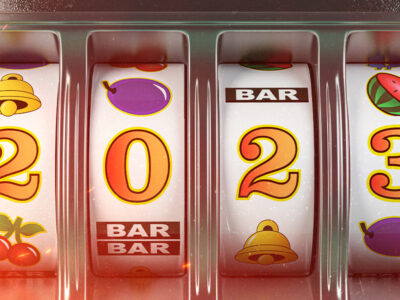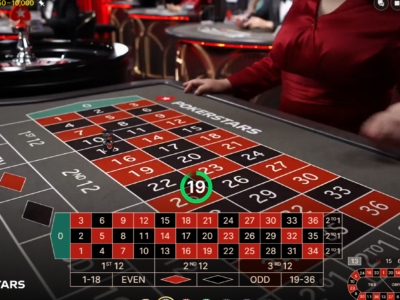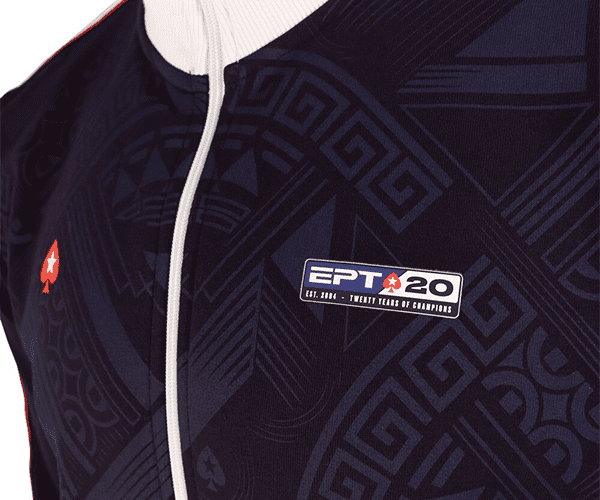Poker has a lot in common with sports, but there’s one big difference. In professional sports, amateurs aren’t typically able to join games and compete against the best. However in poker, anyone with the money to join the game can play.
Indeed, in poker it happens all the time.
I was reminded of this difference last weekend thanks to this great sports story, one that provided a kind of exception to the rule about amateurs not being able to compete with pros — and in fantastic fashion.
Backup goalie gets a once-in-a-lifetime chance
You probably heard something about it. The story involves a National Hockey League game played on Saturday night between the Carolina Hurricanes and Toronto Maple Leafs.
By the second period Carolina was up 3-1, but in truth things weren’t going so well. Their starting goaltender had been injured during the first period, then during the second the backup was injured as well and couldn’t continue, suddenly leaving the team in a desperate spot.
The NHL has an interesting rule regarding such situations. If a team loses both of its goalies like this, they are “entitled to dress and play any available goalkeeper.”
In fact, the home team is required to have an “emergency backup goaltender” — or “EBUG,” as they are often called — ready to play for either team should the need arise. Essentially the player signs a one-day contract in order to fill in. It’s a highly unusual circumstance, though it does come up now and then.
When Carolina’s second goalie went out, it was time to call on the available EBUG, which in this case was 42-year-old David Ayres of Ontario. Ayres is otherwise employed as an operations manager at a nearby coliseum which is home to the Toronto Marlies, the Maple Leafs’ minor league team.
Among his duties, Ayres helps with maintenance at the coliseum, including driving the Zamboni to resurface the ice. He also plays goalie in practices for both the Marlies and Maple Leafs, and so did have some experience in goal before coming into the game on Saturday.
That said, he’d never experienced anything quite like this. Nor did he have any inkling when he went to the arena on Saturday he’d be making his NHL debut!
A couple of minutes after Ayres entered the game, the Hurricanes scored a power play goal to make it 4-1. Then over the next two minutes the Maple Leafs scored twice — the first two shots on goal after Ayres came in — and suddenly it was 4-3.
Ayres managed to stop another shot before the period ended. Then in the third and final period, Carolina scored twice more and Ayres stopped all seven of Toronto’s shots on goal to secure the 6-3 win. In fact, Ayres got credited for the win, making him both the first EBUG ever to do so and the oldest player in NHL history to win his first NHL game.
As you can imagine, the story captured the imaginations of not just hockey fans, but anyone who enjoys a great underdog story. The fact that Ayres had a kidney transplant 15 years ago only added to the improbability of his not only finally getting into a NHL game, but performing well and earning the victory.
Oh, and by the way, the game took place on the 40th anniversary — to the day! — of the U.S. defeating Russia in the 1980 Winter Olympics semifinal in the storied “Miracle on Ice.” Nuts!
If you missed it, here’s a nice recap of a most memorable night for Ayres:
Non-pros playing out football fantasies
What happened with Ayres reminded me of a couple of other sports-related stories involving essentially non-players getting into games and actually competing against pros.
One involves the journalist and sportswriter George Plimpton who was a fairly well known figure during the last decades of the 20th century.
 “Paper Lion” by George Plimpton
“Paper Lion” by George PlimptonPlimpton had an idea to write a story about actually trying out to be a backup quarterback for a NFL football team despite the fact that he wasn’t an athlete himself. He managed to talk the Detroit Lions into taking him up on his offer, and his tryout culminated with him taking a few snaps under center in a scrimmage game and getting creamed repeatedly by the defense for yardage losses.
Plimpton wrote a bestselling book about the experience called Paper Lion that was later made into a funny film starring Alan Alda.
The other story is also from a while back — 1994 — and involves the other kind of football, i.e. soccer to those in the States.
A fellow named Steve Davies was a massive West Ham United fan, and that July the 22-year-old courier went with some mates to Oxford City see a preseason “friendly” involving his beloved team. They secured seats near the West Ham bench, and shortly into the game Davies begins yelling at the coach, Harry Redknapp, about how poorly one of the players was doing.
The tirade continued until halftime, and after a West Ham player was injured Redknapp realized he was running short on bodies to run out on the pitch. That’s when he had an idea.
“I said to this guy in the crowd, ‘Oi, can you play as good as you talk?'” remembers Redknapp (as told in a Guardian account of the event).
One thing leads to another, and soon Davies was in the dressing room getting fit for shoes and a uniform. And soon after the second half started he was actually in the game!
As you might imagine, his mates were losing their minds watching their friend play. It was all a bit surreal for Davies, too.
“This was a step up from Sunday league, to say the least,” recalled Davies, who was instantly humbled by the speed of the game. He managed to hold his own, however, and the story culminates with Davies actually taking a glorious shot on goal.
I don’t want to ruin the ending. You can read the Guardian piece above. Or check out this excellent radio segment from NPR sharing the story of “The Legend of Steve Davies” that features the legend himself.
Amateurs taking on the pros more routine in poker
These are all great stories, in part because of how unusual they are. In poker, by contrast, such stories are fairly common.
Indeed, most players who play poker long enough and especially those who regularly play live tournaments have stories about sitting across from players like Phil Hellmuth or Doyle Brunson or Erik Seidel — top players they first saw on television, against whom they found themselves trying to match wits over real-life poker hands.
Such was the premise of the PokerStars Big Game series in which an amatuer or “loose cannon” was given the opportunity to play against pros. The situation provided many memorable moments, such as this hand between Hellmuth and Ernest Wiggins:
Just as Wiggins managed to win three of four times during those runouts, in these situations the odds are generally against the amateur coming out on top.
Notable exceptions include James McManus going to cover the 2000 World Series of Poker, then entering the Main Event with 500-plus others and making it all of the way to fifth place. That run considerably changed his report, ultimately shared in full in his 2003 book Positively Fifth Street.
Chris Moneymaker‘s 2003 Main Event to the title run falls in the same category. So does writer Maria Konnikova‘s experience over the last couple of years, highlighted by her victory in the PCA National Championship at the 2018 PokerStars Caribbean Adventure, an experience she describes in her forthcoming book, The Biggest Bluff.
So, too, does the one made by our colleague Garry Gates last summer when he finished fourth of 8,569 players for a $3 million prize. Like McManus, Moneymaker, Konnikova, and Ayres, Gates didn’t just go up against the best, but he was successful, too.

That was one seriously good game, GG
The common thread through all of these stories is the way they allow those following along to identify even more strongly with those they are watching compete. When David Ayres skated out there on Saturday — and then incredibly skated off with a victory — we could for a moment imagine doing it ourselves, in a way.
In poker, there’s nothing terribly unique about amateurs getting the chance to play in the “big leagues,” even if only for a short while.
Of course, winning while they do — that’s another, less typical story.
Back to TopView Other Blogs




